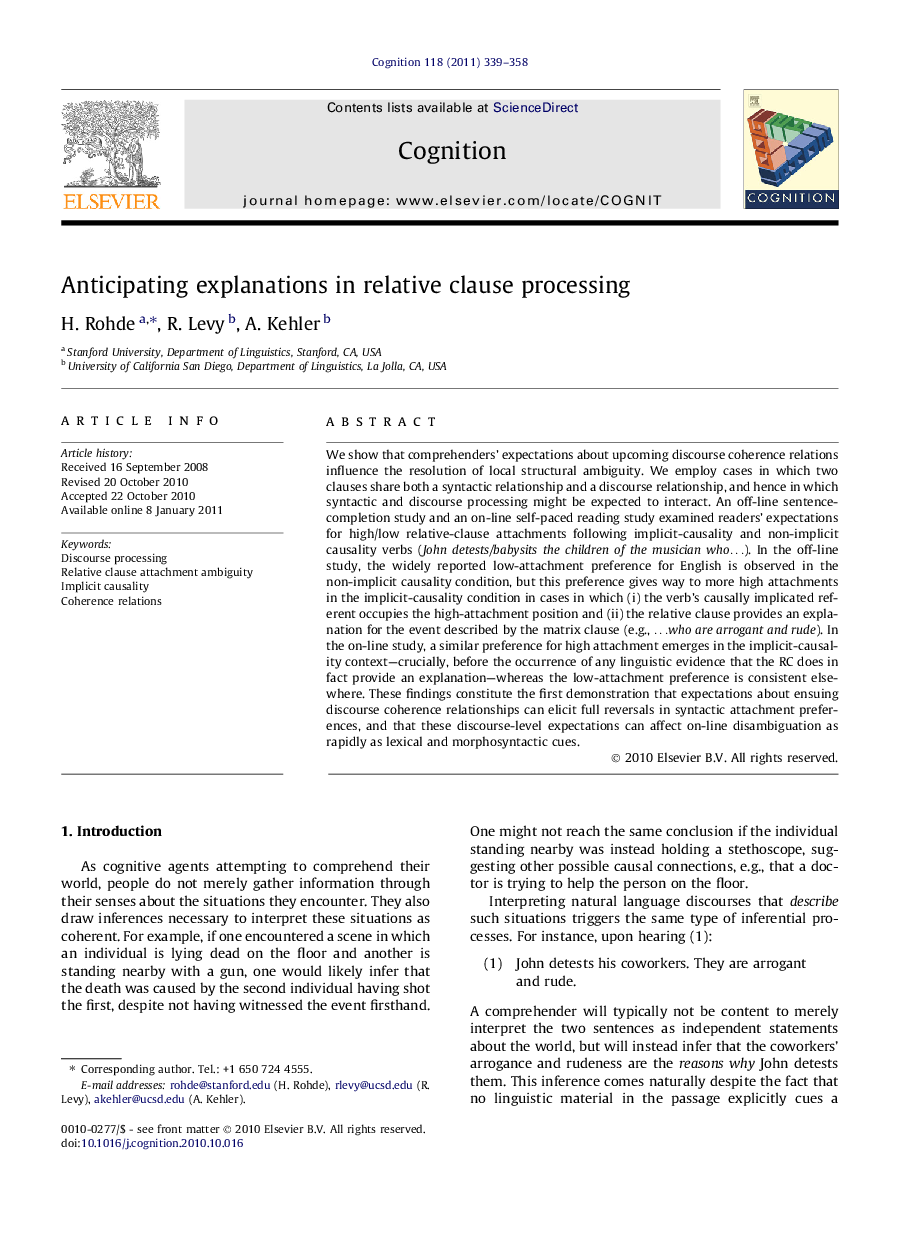| Article ID | Journal | Published Year | Pages | File Type |
|---|---|---|---|---|
| 926587 | Cognition | 2011 | 20 Pages |
We show that comprehenders’ expectations about upcoming discourse coherence relations influence the resolution of local structural ambiguity. We employ cases in which two clauses share both a syntactic relationship and a discourse relationship, and hence in which syntactic and discourse processing might be expected to interact. An off-line sentence-completion study and an on-line self-paced reading study examined readers’ expectations for high/low relative-clause attachments following implicit-causality and non-implicit causality verbs (John detests/babysits the children of the musician who…). In the off-line study, the widely reported low-attachment preference for English is observed in the non-implicit causality condition, but this preference gives way to more high attachments in the implicit-causality condition in cases in which (i) the verb’s causally implicated referent occupies the high-attachment position and (ii) the relative clause provides an explanation for the event described by the matrix clause (e.g., …who are arrogant and rude). In the on-line study, a similar preference for high attachment emerges in the implicit-causality context—crucially, before the occurrence of any linguistic evidence that the RC does in fact provide an explanation—whereas the low-attachment preference is consistent elsewhere. These findings constitute the first demonstration that expectations about ensuing discourse coherence relationships can elicit full reversals in syntactic attachment preferences, and that these discourse-level expectations can affect on-line disambiguation as rapidly as lexical and morphosyntactic cues.
